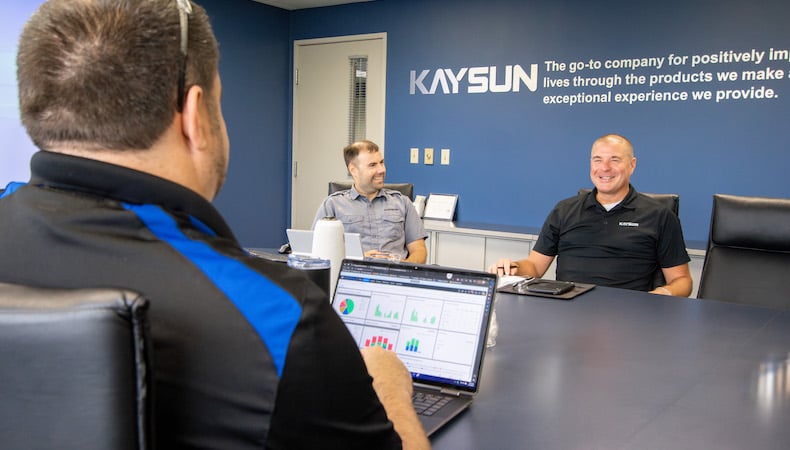Supply chain

Why is reshoring a smart OEM supply chain strategy?
Reshoring injection molding operations helps OEMs mitigate supply chain risk by improving parts availability, manufacturing efficiency, product quality, and logistics responsiveness. A U.S.-based manufacturing partner enables a more resilient, streamlined OEM supply chain strategy tailored to curtail the impact of current global unpredictability and market disruptions.
More U.S. manufacturing CEOs are getting behind reshoring. According to the 2025 Kearney Reshoring Index, 70% cite cost control, and 55% name supply chain resilience as top reasons for domestic production.
Success often hinges on partnering with a U. S.-based injection molder that adapts quickly to change and protects against growing OEM vulnerabilities. A solid OEM supply chain strategy built around the following 4 action steps is essential for future-ready manufacturing
Without timely access to reliable, precision-molded plastic components, OEMs often struggle to meet production goals. Offshoring increases the potential risk by introducing:
By partnering with domestic injection molders, OEMs eliminate these friction points and tighten supply chains. Faster production, fewer logistical variables, and local support translate into reliable inventory access and more practical lead times.
Language, cultural, and procedural gaps can trigger communication breakdowns.
What this means for OEMs: Misinterpretations of design files, timelines, and expectations can delay or derail production altogether.
Reshoring enables real-time collaboration. Since U.S. injection molding partners and OEMs typically share the same language, closer time zones, and business practices:
Operational clarity at this level leads to fewer costly delays and greater predictability.
Quality is non-negotiable in heavily regulated or high-stakes industries such as medical devices, industrial controls, or electronic assemblies.
Offshoring raises serious questions when injection-molded parts fail inspection or defects arise:
On the other hand, domestically produced injection-molded parts are subject to manufacturer quality assurance standards. Course correction, when necessary, is efficiently accomplished, resulting in less rework, fewer recalls, and lower total cost of ownership.
Transoceanic shipping and varying time zones automatically increase product lead time. Adverse weather, customs complications, and other delay-inducing delivery hurdles can introduce more inefficiency.
Domestic sourcing removes these roadblocks. Injection-molded parts produced locally can be delivered just-in-time — often by ground freight — and at significantly lower shipping costs. With reshoring, OEMs gain:
This logistical efficiency is a competitive differentiator, particularly during demand spikes or market disruptions.
Download our free white paper: Exploring Reshoring: Insights for OEMs and learn how domestic sourcing and a carefully considered OEM supply chain strategy drive ROI, reduce lead time, and safeguard your operations.


Despite being considered more energy efficient and producing less waste than other…
READ MORE

Environmental protection and the legislation surrounding it have heightened people…
READ MORE

By 2024 the need for automotive plastics, parts, and innovations will push the val…
READ MORE